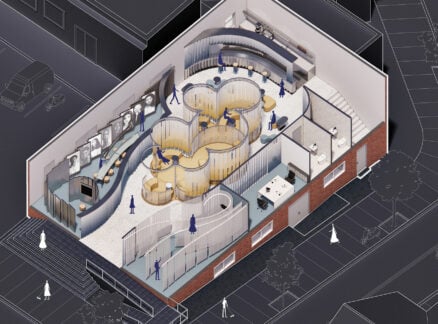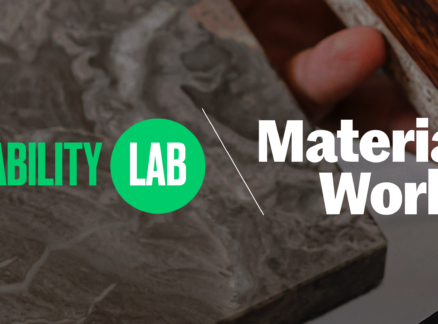November 1, 2005
Warhol’s Time Machine
The artist’s 612 cardboard boxes of junk offer a gateway to the past, the present, and maybe even the future.
This is so twenty-first century, I think, walking across the Seventh Street Bridge in downtown Pittsburgh on a stupefyingly hot August afternoon. The bridge is one of three practically identical suspension spans built across the Allegheny River in the mid-1920s. Made of steel painted butter yellow, it’s a beautiful and poetic expression of the city’s industrial past. However, in March it was renamed the Andy Warhol Bridge after the city’s most famous postindustrial son. Clamped onto the bridge’s cables are a succession of square banners displaying Warhol’s blank expression and announcing the new name. And so the bridge has become a strange hybrid of past, present, and future that seems to define this century thus far—a symbol of industrial might retrofitted into an emblem of third-millennium insouciance.
Warhol of course left Pittsburgh and pretty much never came back. During my visit the “You Had to Ask” column in the local alternative weekly addressed the plaintive question, “Why did Andy Warhol not play up the fact that he was from Pittsburgh?” The answer is that the blue-collar city was not kind to sensitive young Andy. But now the artist has become a civic icon—the name Warhol is as prominent locally as Carnegie, Mellon, or Heinz—in a city that has lately become a magnet for artists.
It is in fact Warhol who drew me to Pittsburgh. I was lured here by a Web site launched in May by the Andy Warhol Museum. The site (www.warhol.org/tc21) is itself a form of cultural time travel; it makes the contents of one of Warhol’s Time Capsules accessible to Internet users. Largely unknown until the artist’s death in 1987, the Time Capsules were the 612 cardboard boxes that he filled with the stuff that he accumulated—the by-products of art, life, and fame. Warhol used to keep a box by his desk and toss things in: correspondence, receipts, newspaper clippings, photographs, and gifts. Some of the things were so minor that anyone else would have simply thrown them away. One capsule, archivist Matthew Wrbican tells me, contained hunks of insect-infested pizza dough. Why? No one knows. Some things were so significant—letters from Mick Jagger, a paint palette used by Salvador Dalí—that anyone else would have put them carefully away, but Warhol dropped his overflow in cardboard boxes that were each taped shut, dated, and placed in storage by an assistant.
I’ve been fascinated with Warhol’s Time Capsules since I first heard about them a decade ago, maybe because I too am loath to throw things away or because I love rummaging through other people’s ephemera. Thanks to a zoom feature, the TC21 Web site allows me to closely examine nearly 50 of the items found in the box, including a newspaper photo of Cambodia’s Prince Norodom Sihanouk standing beneath the official portrait of Mao that Warhol used to make his famous series, an unopened copy of the Rolling Stones album Sticky Fingers, and a receipt for $360 from This Week magazine for illustrations Warhol did in 1959.
Not only can I zoom in on each item, but the site provides context: the relevant Warhol artworks, video and audio clips from the Factory, commentary by important art-world personages, and links to other bits of archival material. It’s a well-designed, satisfying site, one that represents everything I’d ever hoped for from the Web. I could bury myself in it for hours, even days.
Lately I’ve been thinking about time—specifically the way that the twentieth century has begun to recede and the twenty-first has started to assert itself. This new century feels less like one of those seamless science-fiction places where everything is smooth and technologically advanced and more like a cut-and-paste job, with the new tightly tethered to the old. The contents of the Warhol Time Capsule serve as a trail of bread crumbs that I can follow from a still resonant period 30-plus years ago deep into the strange hybrid moment that is the present.
Indeed my first stop in Pittsburgh is the Strategy Office of Aesthetics and Design (SO-AD), a small four-year-old firm run by two Columbia University-trained architects—Abigail Hart Gray, 28, and David Burns, 33. Computer-savvy and effortlessly interdisciplinary as only young practitioners can be, they produce buildings, theater sets, and Web sites. SO-AD designed the Time Capsule site and reveled in the Warhol Museum’s taste for what Burns describes as “deep content.” The pair migrated from Auburn University to Pittsburgh to take teaching posts at Carnegie Mellon, and they regard the city as a sort of laboratory: open, wondrous, and full of opportunities—and cheap real estate. For one recent commission Gray went to an initial meeting and, “They asked me about our relationship with steel,” she says. “At first I said we didn’t have one.” She quickly re-thought that answer, and as a result SO-AD is currently working on the set for a dance performance inspired by the metal that made Pittsburgh great.
SO-AD is headquartered in a handsome turn-of-the-century freight warehouse that has lately been reinvented as the River Walk Corporate Center. I walk in the door of a cavernous room with brick walls painted white, a bare concrete floor, a couple of simple tables serving as desks, and a row of huge windows overlooking the complex infrastructure that is a vestige of the city’s past—except the concrete plant outside SO-AD’s window is no vestige; it’s still operating. And as we stand there a worker springs onto a long steeply angled conveyor belt. He rides it to the top end of the plant, gets off, and disappears. It’s like an old Lewis Hine photo come to life. The three of us stand at the windows in the archetypal postindustrial studio watching a scene from the industrial past; it’s as if the window were a time machine.
Maybe it’s the heat, but I feel like I’ve somehow slipped into an Einsteinian loop where the past, present, and future are not sequential but simultaneous. And my visit to the Warhol Museum only amplifies that sensation. I don’t recall caring that deeply about him while he was still alive, particularly because in his later years he became the figurehead of a certain kind of New York social scene. It was hard to see the art for the hype. But there is something about the way the museum presents his art that reinvigorates Warhol. It’s less about how we see him, and more about how he saw the world and how his ways of seeing influence ours.
During the course of conversations with Wrbican and Jessica Gogan, the assistant director for education and interpretation, I begin to think that Warhol invented a way of life that the rest of us are only catching up to now. And the Time Capsules, rather than his paintings or prints, are the works that make this clear. They are exactly what the name implies: boxes of time.
In The Shock of the New, art critic Robert Hughes argued that the one idea Warhol introduced into the art world was the power of repetition. But it was more than that. To me the most potent thing Warhol did was transform the everyday—the soup can, the receipt, the newspaper photo—into the momentous. It wasn’t just the idea that commercial images have aesthetic value, or that we’ll all be famous for 15 minutes, or that art has been transformed by the age of mechanical reproduction, but that there is limitless elegance and intrigue to be teased out of the minutiae of daily existence.
Warhol trailblazed a twenty-first-century way of seeing, using primitive twentieth-century tools: the lithograph, the photo booth, the Polaroid camera, the movie camera, the cardboard box. The Time Capsules, jammed full of the things that inspired Warhol, that he was obsessed with, can be read as predigital blogs. And the way he lived—immersed in a stew of public and private, art and life—is how more and more people routinely live today. Imagine if Warhol had had a camera-phone or a cable modem or his own Web site.
I walk out of the museum in a sort of Warhol daze. Maybe what I’m experiencing is simply nostalgia—the 1960s and ’70s have acquired new relevance lately—but I suddenly feel as though we are living today in the Age of Warhol: a time in which the ephemeral is permanent, the private is public, and the public is private. And Pittsburgh is a city that dances about steel.





